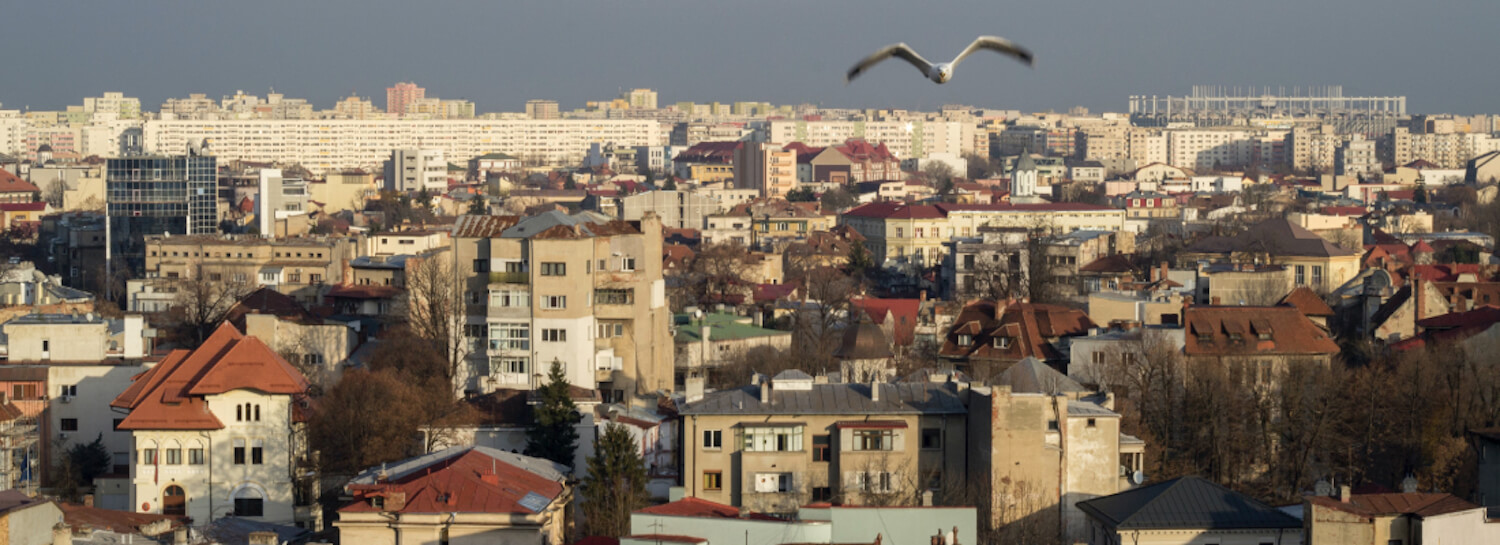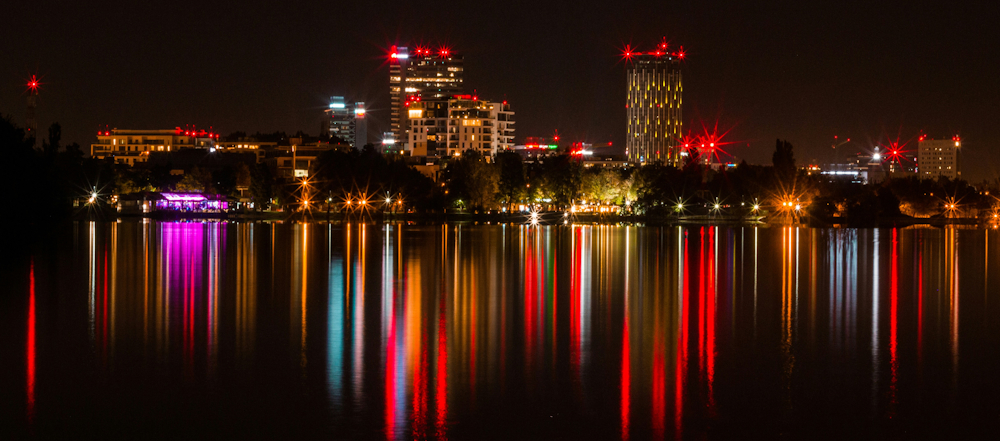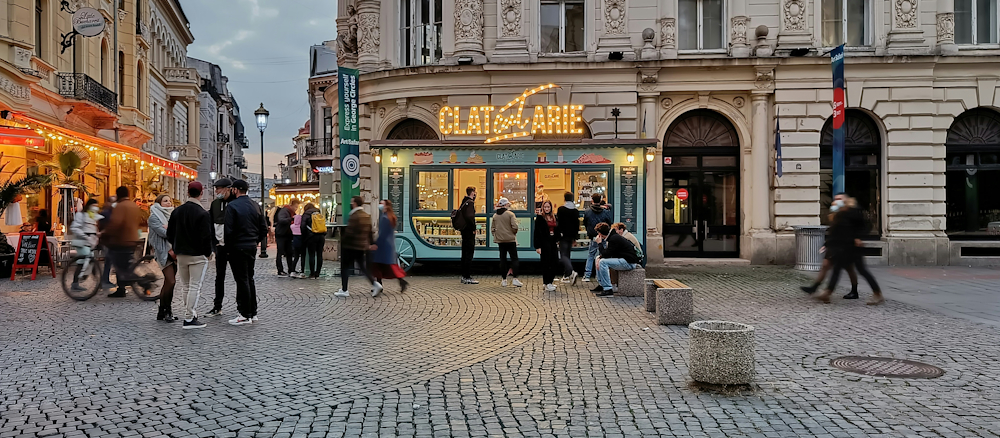International schools in Bucharest cater to expat families seeking education options beyond the local system. These schools teach a foreign curriculum in the language of the school’s country of origin. Many international schools in Bucharest offer the British curriculum, including the Cambridge IGCSE and A-Levels, and a number of schools teach the world-renowned International Baccalaureate.
You’ll find that international schools in Bucharest generally offer a high standard of education, a wide range of extracurricular activities, and modern teaching styles. The quality and popularity of these schools mean that places are limited and fees are often higher than those of other educational institutions.
Read more about Education and Schools in Bucharest.
Here are a few recommended international schools in Bucharest.
International schools in Bucharest

American International School of Bucharest
Founded in 1962 by the US Embassy, this well-established school serves around 900 students from over 60 nationalities on an expansive ten-hectare purpose-built campus in Voluntari. The school emphasises developing creative and compassionate learners through its comprehensive International Baccalaureate programmes spanning early childhood through to the diploma level.
Curriculum: International Baccalaureate
Gender: Co-educational
Ages: 2 to 18
Website: www.aisb.ro
Avenor College
This bilingual international school has earned the distinction of being the first school in Bucharest rated ‘Outstanding’ in the British system, alongside a ‘Very Good’ rating in the Romanian system. Located on a modern 86,111-square-foot campus (8,000 sq m) at the edge of Băneasa Forest with an additional nursery in the city centre, the school serves over 820 students and boasts a 100 percent university acceptance rate for its graduates.
Curriculum: British (National English Curriculum, Cambridge IGCSE and A-Levels) and Romanian
Gender: Co-educational
Ages: 2 to 18
Website: www.avenor.ro
British School of Bucharest
Set on a purpose-built, tree-lined campus in northern Bucharest, this school positions itself as the leading international centre of academic excellence in Romania. The facilities are particularly impressive, featuring an Innovation Hub established in 2016, multiple laboratories, an outdoor swimming pool, a climbing wall and unique spaces like the ‘Re-Wilding Zone’ and Science Garden that support hands-on learning beyond traditional classrooms.
Curriculum: British (English National Curriculum, Cambridge IGCSE and A-Levels)
Gender: Co-educational
Ages: 2 to 18
Website: www.britishschool.ro
Bucharest Christian Academy
Starting life as a homeschool cooperative in 1993, this American international school has evolved into a multicultural community situated in the heart of Sector 3. The academy distinguishes itself as a fully American international school in Bucharest that teaches from a Christian worldview, offering a holistic education approach that nurtures intellectual, physical, emotional and spiritual development.
Curriculum: American
Gender: Co-educational
Ages: 3 to 18
Website: www.bcaromania.org
Cambridge School of Bucharest
This trailblazing institution made educational history in 2025 by becoming the first school in Romania to pass inspection under the UK’s newly revised British Schools Overseas framework. The school achieved dual gold-standard accreditation as both a BSO and IB World School within months of each other, with inspectors praising students who ‘work hard, show curiosity, and are not afraid to make mistakes’ on their modern campus in Băneasa Forest.
Curriculum: British (English National Curriculum, Cambridge IGCSE and A-levels)
Gender: Co-educational
Ages: 3 to 18
Website: www.cambridgeschool.ro
Deutsche Schule Bucharest
Established in 2007, this institution holds the unique distinction of being the only school in Romania that follows the German curriculum in its entirety, specifically the Baden-Württemberg state programme. Recognised by Germany’s Ministry of Foreign Affairs through the Central Agency for German Schools Abroad (ZfA) and a member of the World Association of German Schools Abroad (WDA), the school moved to its new campus on Coralilor Street in 2022.
Curriculum: German
Gender: Co-educational
Ages: 1.5 to 18
Website: www.dsbu.ro
International British School of Bucharest
With a quarter-century of educational excellence since its establishment in 2000, this school positions itself as ‘building a community of passionate lifelong learners’ in the heart of Bucharest. The institution takes pride in its diverse international makeup, representing over 30 different nationalities, and has produced over 430 global alums, whilst offering more than 110 extracurricular activities to enrich student life.
Curriculum: British (English National Curriculum, Cambridge IGCSE and A-levels)
Gender: Co-educational
Ages: 3 to 18
Website: www.ibsb.ro
International School of Bucharest
From humble beginnings with just 17 students in a rented building in 1996, this institution has grown substantially and relocated to a purpose-built campus in a green area of eastern Bucharest in 2008. Fully accredited by the Council of International Schools (CIS) since 2012, the school has recently achieved Romania’s strongest International Baccalaureate results and reintroduced A-Level qualifications to complement its existing programmes.
Curriculum: British (English National Curriculum and Cambridge IGCSE) and International Baccalaureate
Gender: Co-educational
Ages: 2 to 18
Website: www.isb.ro
Little London International Academy
With over two decades of experience in Romania’s private education sector, this institution has established itself as a comprehensive educational provider across all academic levels from preschool through to high school. Accredited by both Romania’s Ministry of Education and the International Baccalaureate Organisation for its Primary Years Programme, the academy focuses on intensive English language study through Cambridge examinations and academic performance through practical application and project-based learning.
Curriculum: International Baccalaureate and Romanian
Gender: Co-educational
Ages: 3 to 18
Website: www.lliacademy.ro
Lycée Français Anna de Noailles
Named after the renowned French writer of Romanian descent, this school boasts over a century of educational heritage, having been founded in 1920 and celebrating its centenary in recent years. Operating under the auspices of France’s Agency for French Education Abroad (AEFE), the institution serves over 560 students representing nine nationalities, with strong corporate backing from major French companies, including Orange, Carrefour and Michelin as founding members.
Curriculum: French
Gender: Co-educational
Ages: 3 to 18
Website: www.lyceefrancais.ro
Maarif International School of Bucharest
Part of the global Turkish Maarif Foundation network that operates over 460 schools across 55 countries with more than 55,000 students worldwide, this institution brings a truly international perspective to Bucharest. The school celebrates remarkable cultural diversity with students from over 20 different countries, emphasising values-based education that aims to develop both academic excellence and strong moral character whilst serving as a bridge for peace and shared values.
Curriculum: British (Cambridge IGCSE) and Romanian
Gender: Co-educational
Ages: 3 to 18
Website: www.imsb.ro
Mark Twain International School
Celebrating its 30th anniversary in 2025, this award-winning International Baccalaureate World School stands as one of the oldest Romanian private schools, having been founded in 1995. The institution prides itself on its expansive 16,000-square-metre green campus in Băneasa, offering premium bilingual and international programmes that have earned recognition for their quality and educational excellence.
Curriculum: International Baccalaureate
Gender: Co-educational
Ages: 2 to 18
Website: www.marktwainschool.ro
Olga Gudynn International School
This UNESCO-affiliated institution has operated across multiple Bucharest campuses for 24 years, serving over 860 students from diverse nationalities. The school holds International Baccalaureate authorisation for both the Diploma Programme and Middle Years Programme, whilst students consistently earn medals in national Olympiads and secure places at prestigious universities worldwide through their academic achievements and extensive extracurricular portfolios.
Curriculum: British (English National Curriculum), International Baccalaureate, and Romanian
Gender: Co-educational
Ages: 3 to 15
Website: www.olgagudynn.ro
Scuola Italiana Internazionale Aldo Moro di Bucarest
Named after the prominent Italian statesman, this school operates from its new premises on Intrarea Blaj and forms part of the ‘Liberi di Educare’ educational group. The institution has gained ministerial recognition and maintains partnerships with Italian business organisations, including Confindustria Romania, providing students with a complete cycle of Italian education whilst emphasising talent development and international orientation.
Curriculum: Italian
Gender: Co-educational
Ages: 5 to 18
Website: www.scuolaitalianabucarest.com
Verita International School
Part of the prestigious Dukes Education network of over 75 schools worldwide, this institution distinguishes itself through its remarkably low student-teacher ratio of 1:9 and partnerships with Emory University for social-emotional learning programmes. The school operates across multiple campuses in Bucharest, serving over 650 families with an innovative approach that emphasises emotional intelligence and student wellbeing at the heart of its educational philosophy.
Curriculum: British (English National Curriculum and Cambridge IGCSE) and International Baccalaureate
Gender: Co-educational
Ages: 3 to 18
Website: www.veritaschool.ro















